Words by Marion Cachon
English version | Lire la version française →
Issue N.21
Sept. 2020
Author: Marion Cachon
Font: La Gauchère
Printed in the margins of:
INNI Group, Heule [BE]
± 500 copies
From her “gaucherie” Marion Cachon draws a methodological and creative force in order to design a troubling and riveting font that surpasses the pejorative connotations associated to the term “gauche” – the French word for “left” as well as for “clumsy” – in her native language.
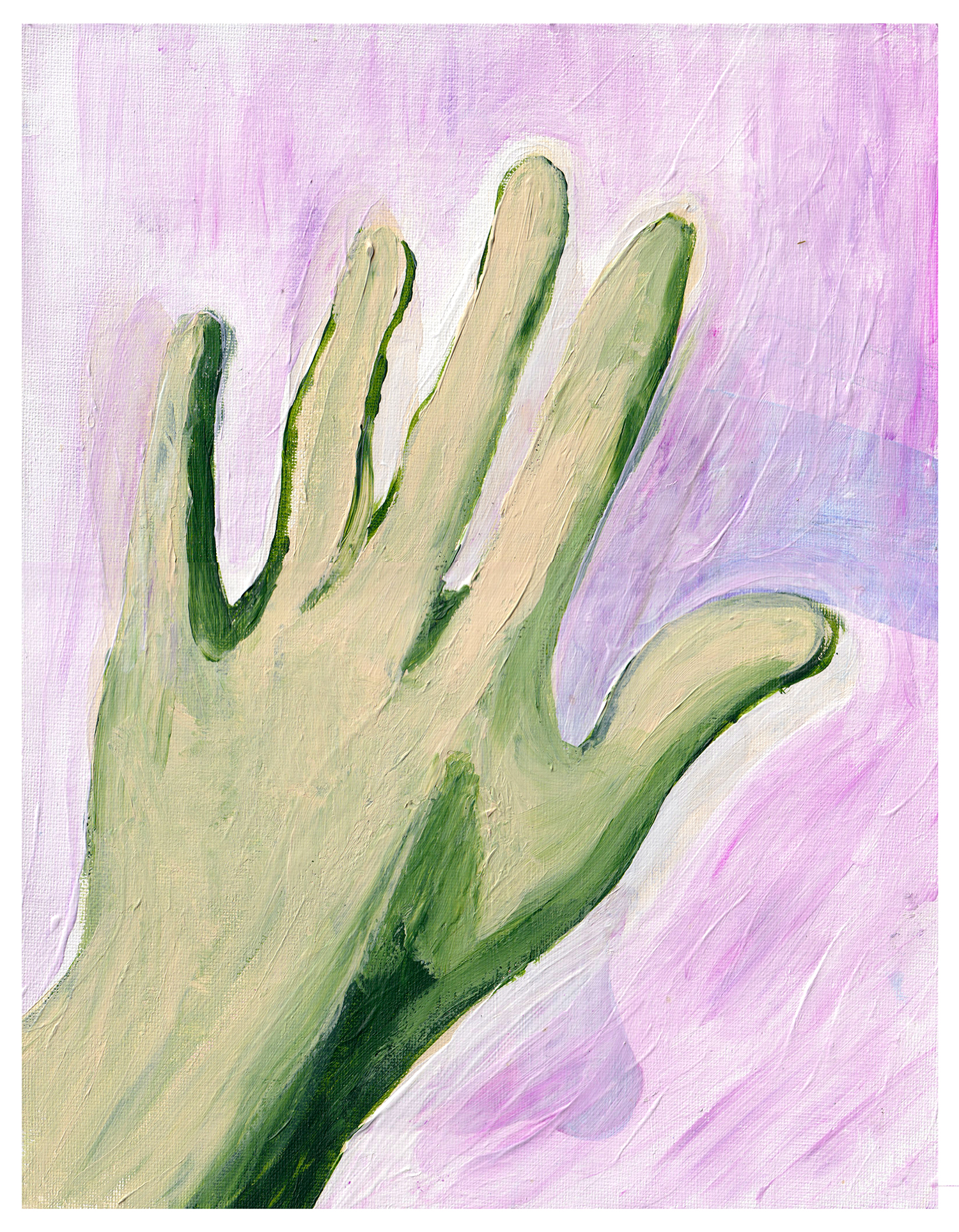
Senestre, acrylic on canvas.
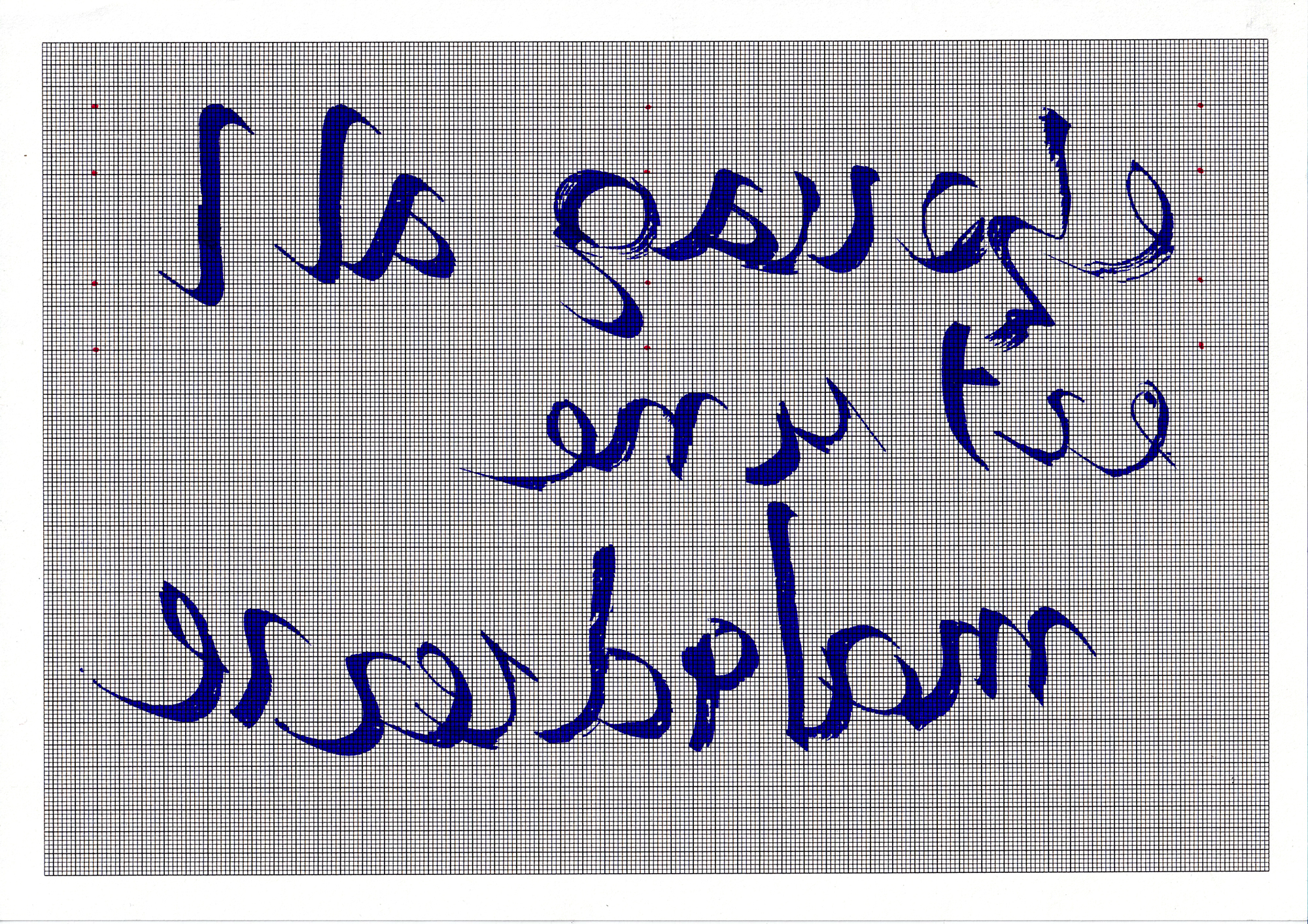
La Gauchère is a typographic, educational and literary project in progress since January 2018. By means of poetic and symbolic claim, it aims to think the left-handedness as a methodological and creative strength instead of limiting it to the pejorative connotations that language gave to the term (clumsiness, awkwardness etc.).
Historically, in most occidental and oriental societies, the left hand possesses a long story of blame and prohibition, its pejorative legacy still feeds the french language today.
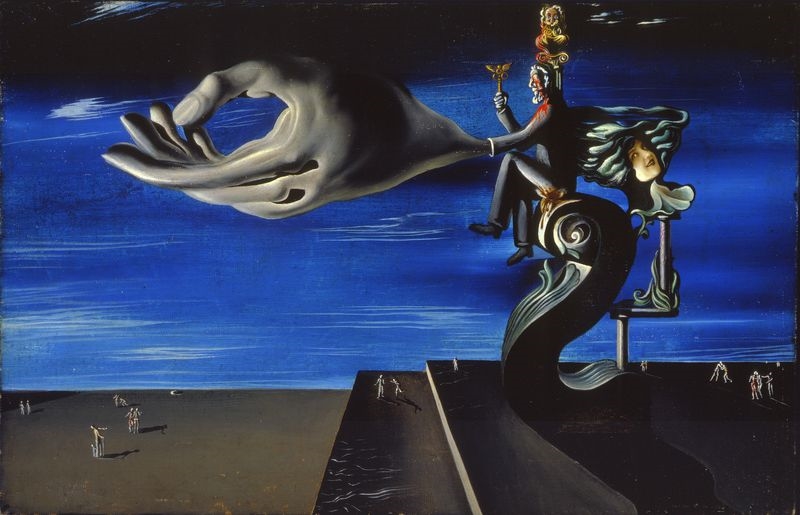
Dali, La main. Les remords de conscience, 1930, oil and collage on wood.
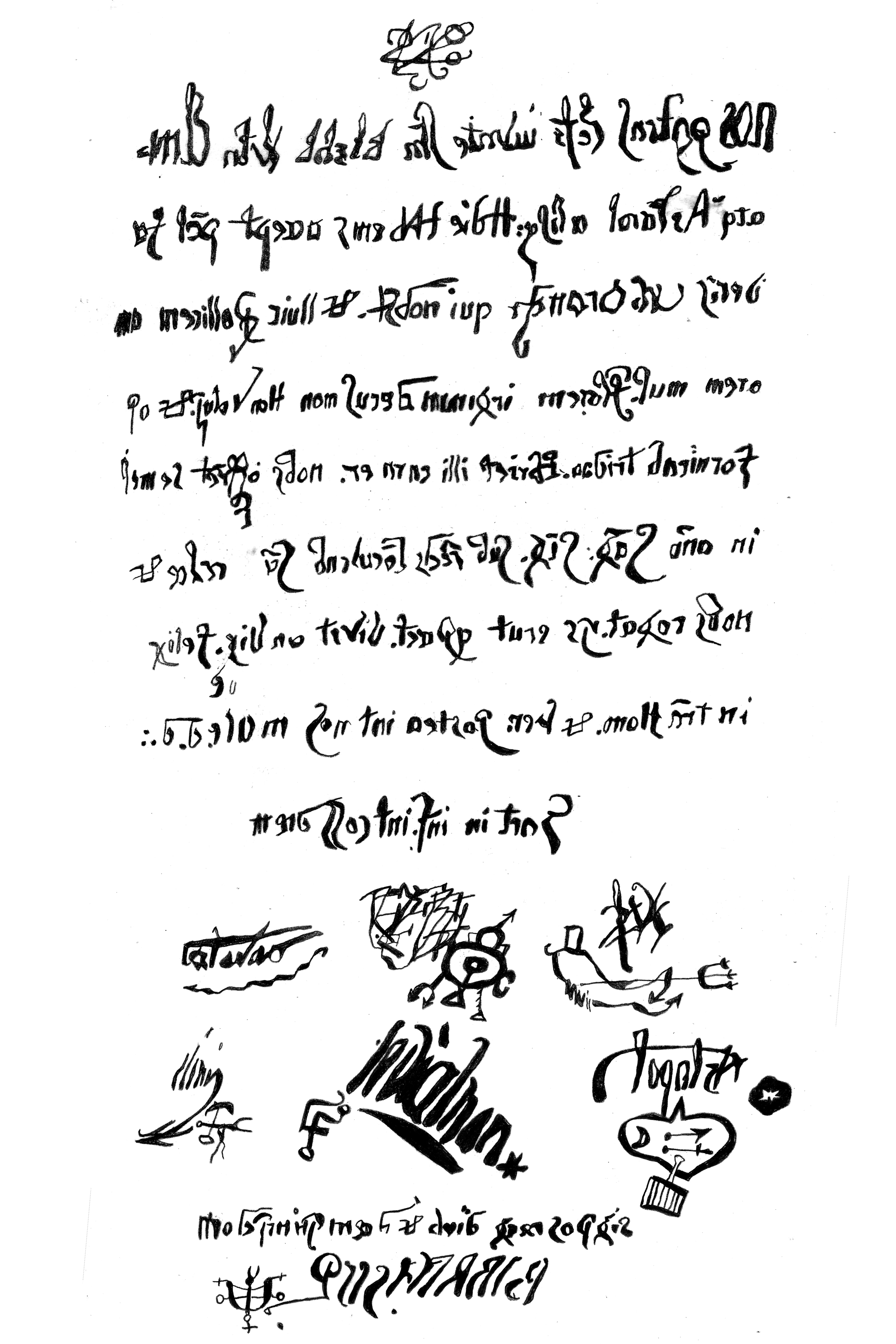
Urbain Grandier, Prétendu pacte avec le diable, 1634. (See The Case of Loudun’s devils. Accused of witchcraft, the priest was executed at the stake the august 18th, 1634.)
Etymologically, the word «droite» (right) comes from the latin Dexter, and the word «gauche» (left) from the latin Sinister, designating every left thing as coming from darkness. This spatial dualism continues to structure our minds, including certain moral values. Since the Middle Ages, the left-handed is a transgressive figure, whereas the right-handed, using his good hand, benefits the values of beauty, rectitude and dexterity, also seizing the areas of Justice and the Legitimate. It’s probably the reason why writing, the gestural takeover of language, was for a long time under harsh surveillance.
These dualities give to left handed people a feeling of frustration and submission, which isn’t without reminding the case of thwarted left-handers forced to write with the right hand at school, during the XIX and XX centuries in France and Europe.
Rewriting Benjamin Franklin’s Petition for the left hand, with a similar restraint that involves the ties which encircled the pupils’s wrists, seemed to be a beautiful way to divert this first injunction.
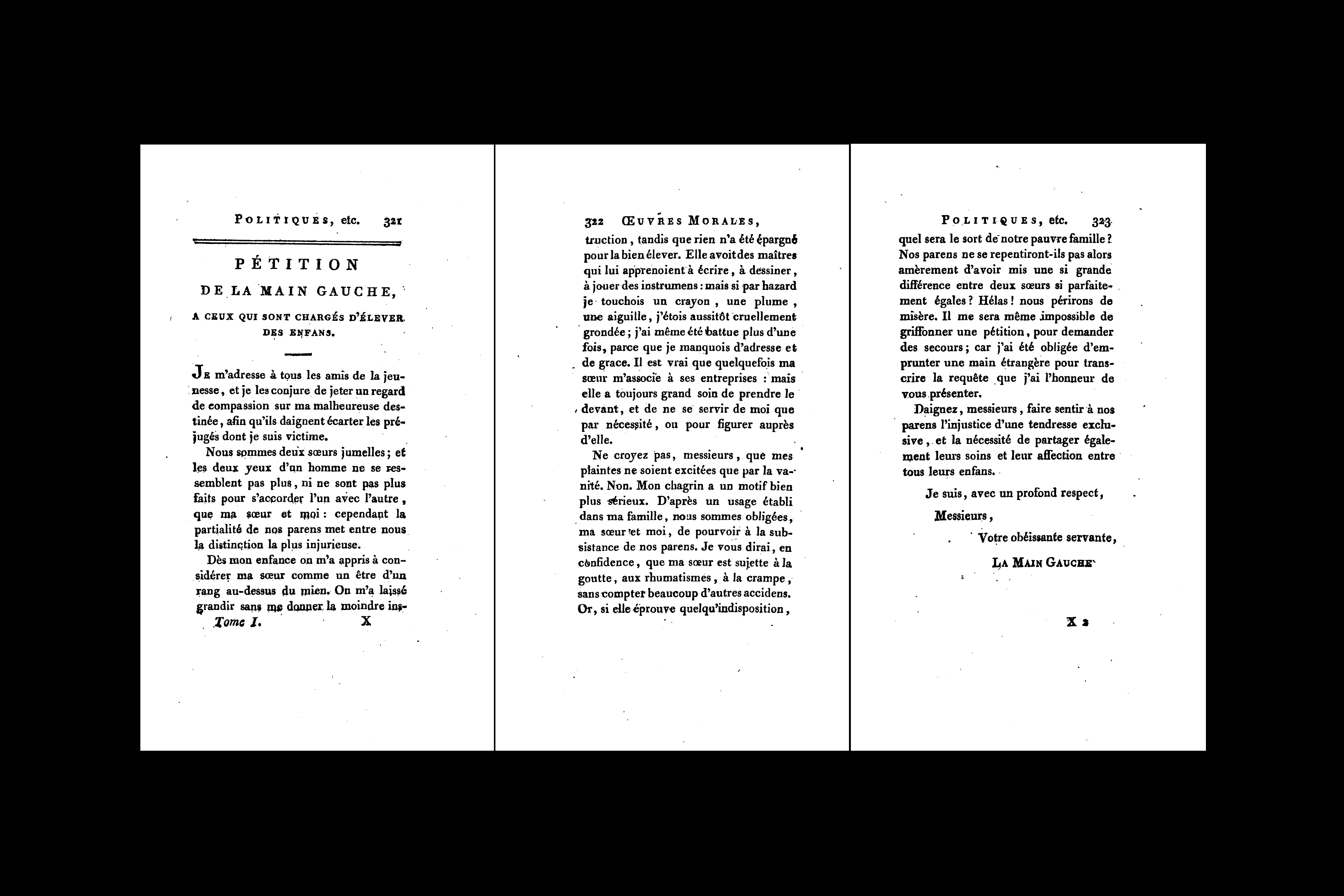
In his definition, «être gauche» or «gauchie» also means being clumsy, curved, distorted or backwards. This vocabulary is strangely embodied by calligraphy. While writing can be considered as the oldest human institution, the use of quill as the medium for the project makes sense. It’s a traditional learning tool for writing, but also offers training for the body and soul. It dictates certain positions and requires a lot of practice and strictness for its owner to master it. But, in calligraphy, it also represents an intimate experience of release, a perfect agreement between mind and body. It is therefor situated between constraint and emancipation, and that permits me to give La Gauchère its graphic body and shape.
Although left-handed people are used to live in a mainly ”right“ world, they develop a better perception of space’ symmetry/divisions. This phenomenon makes them more skilled in certains approaches of analysis and transfer. It’s the same for writing: it’s known that left-handers, like Léonard de Vinci, easily think writing “in mirror”.
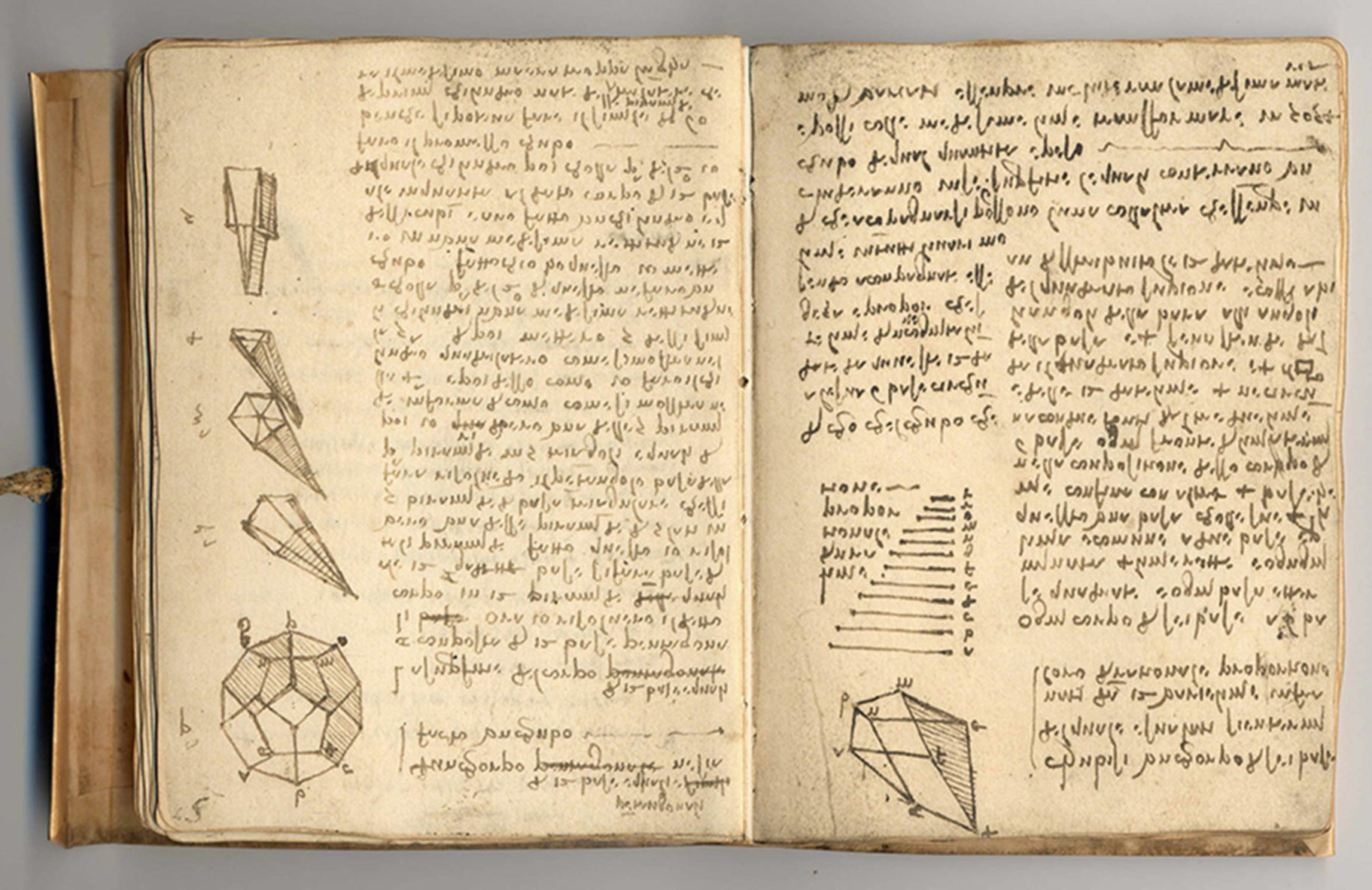
Léonard de Vinci, extract of Codex Atlanticus, between 1478 and 1518.
Natural gesture involves writing from right to left, the drawing of this alphabet follows the same movement, a reversion of the known shapes of letters. It’s a cognitive strength which contradicts all the omens previously announced, it serves me as a base to “rebalance” the weaknesses imposed to the left-handed. This process reveals a wide range of writing skills and the shapes offer the eye both disturbing and fascinating power. That’s the perception my typography aims to support.
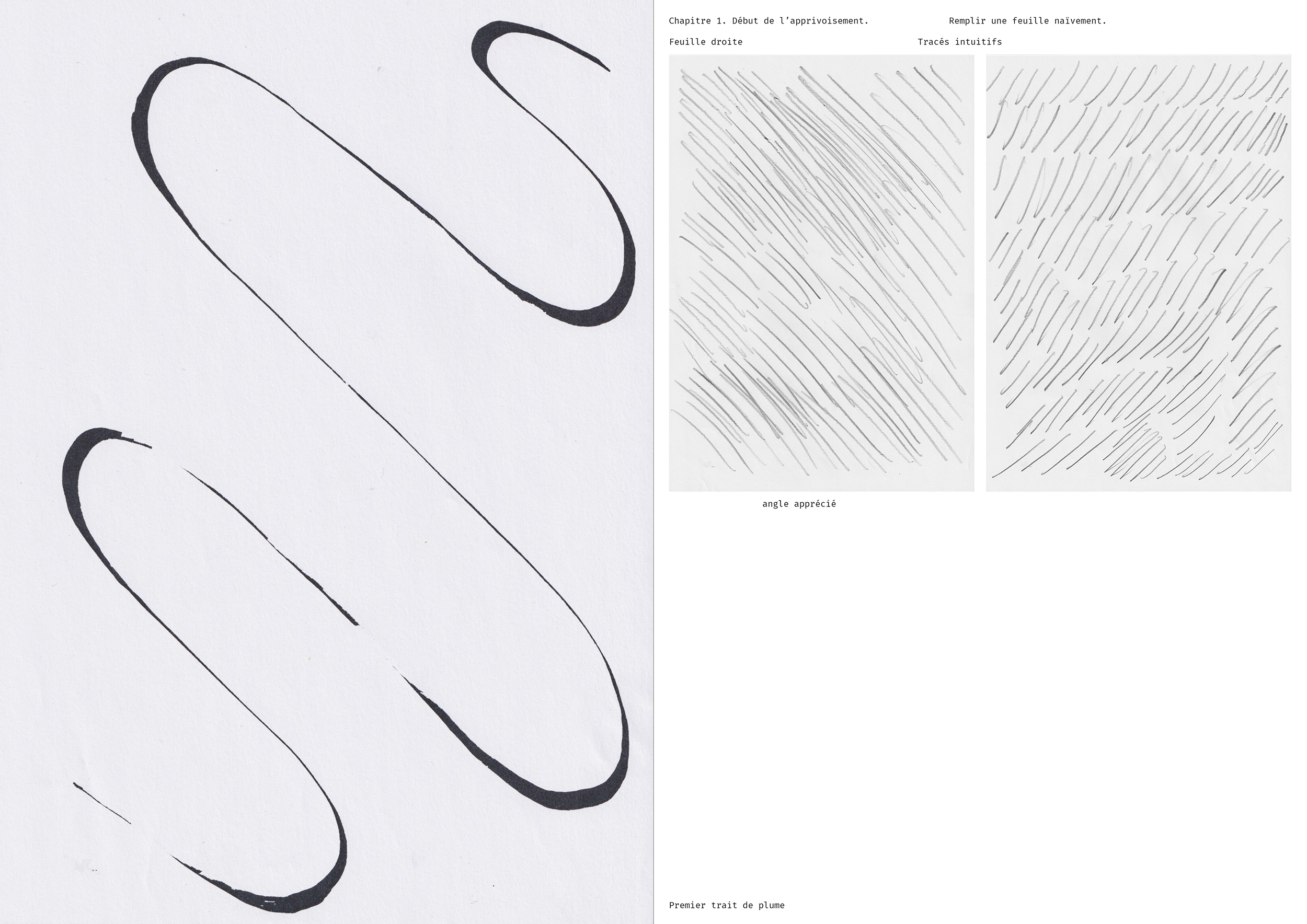
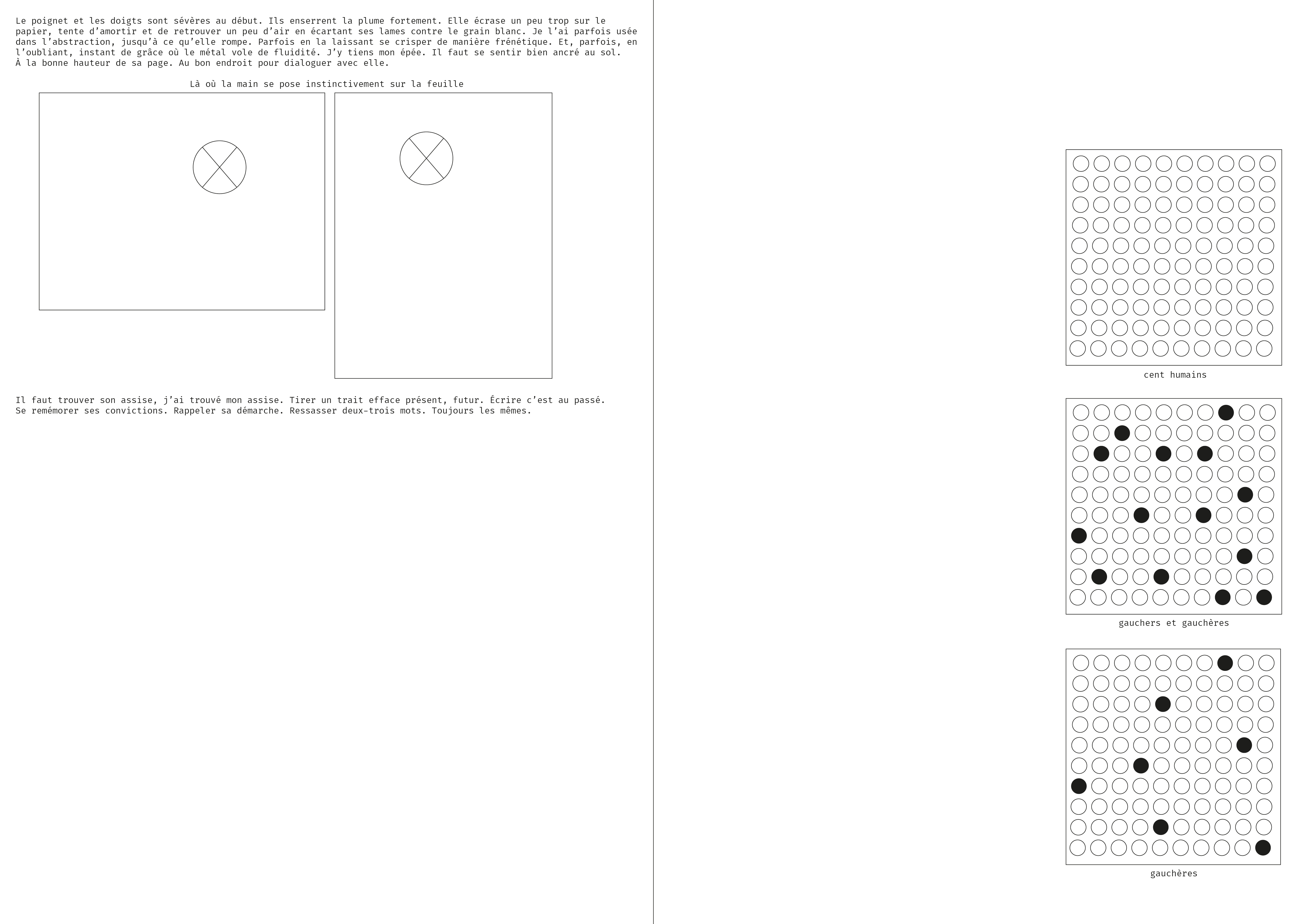
Researches for La Gauchère.
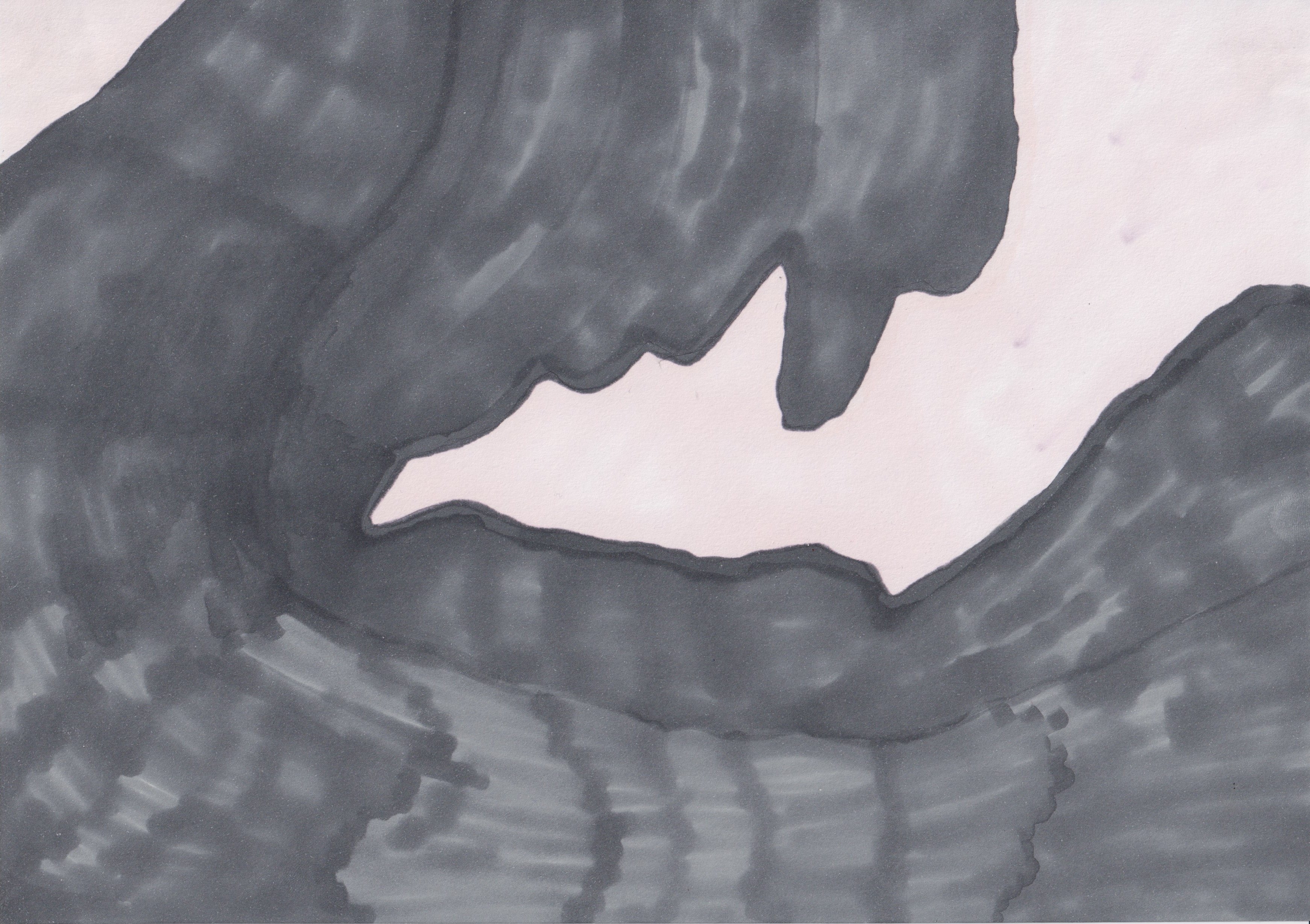
Jour 0, felt pen on paper.
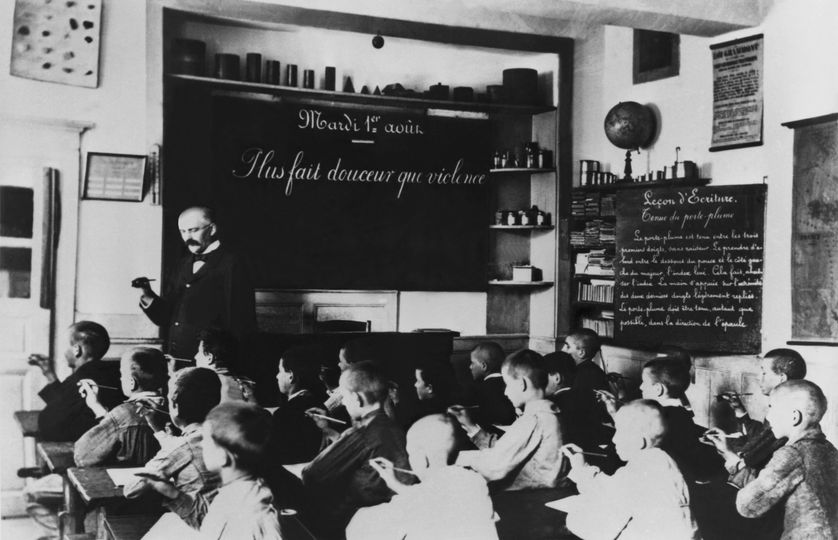
École de garçons de Damvillers, Leçon d'écriture n°2, 1899.
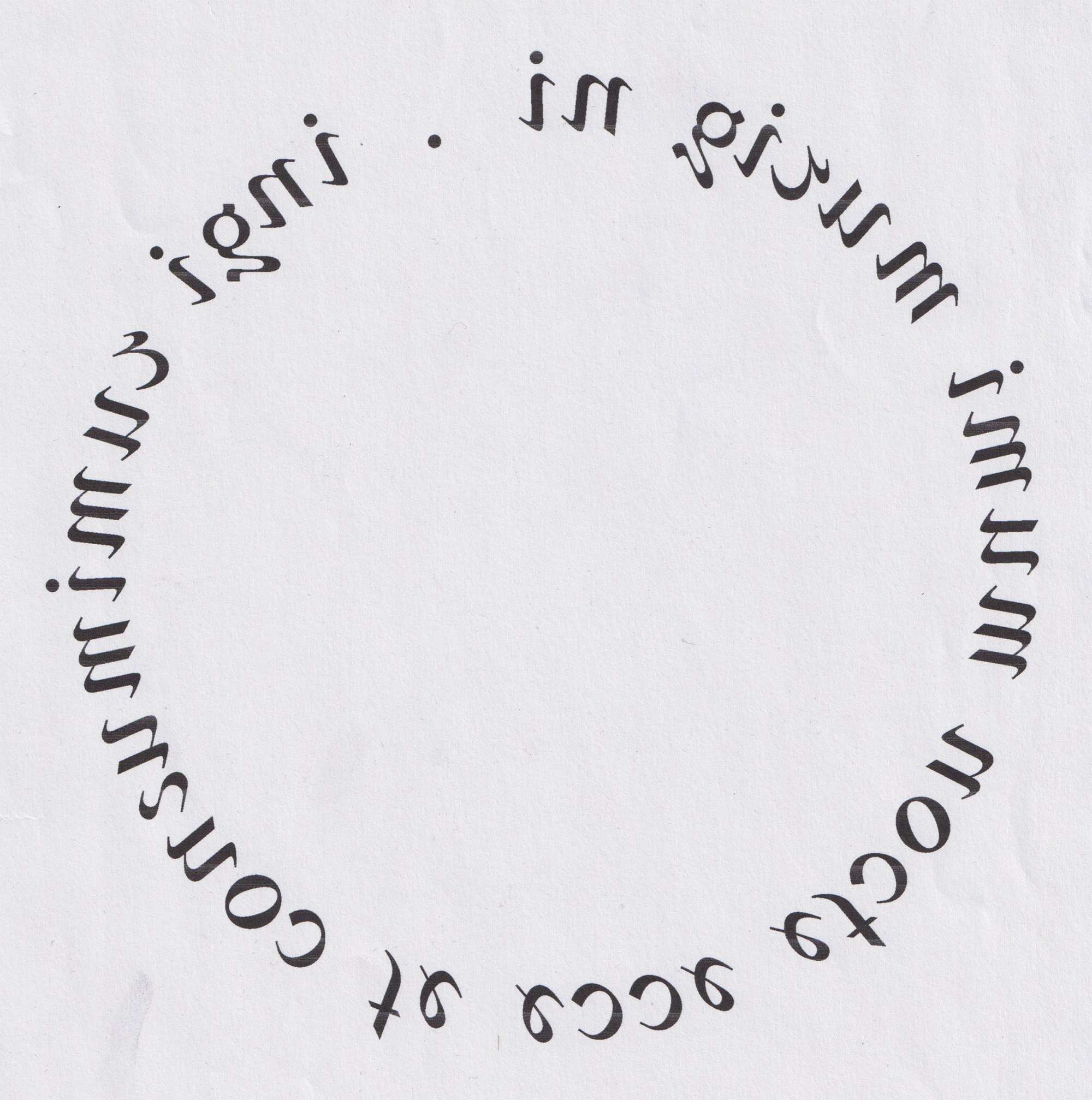
In girum imus nocte ecce et consumimur igni, palindrome meaning “We enter the circle at night and are consumed by fire”. A palindrome said to describe the behavior of moths. Also the title of a film by Guy Debord.
In literacy, I noticed that the notion of «gaucherie» (left-handedness) exists in two ways:
• a large amount of writers were constrained to use there left hand following an accident; J.J Viton, B. Cendrars, H. Michaux, are a few examples. They wrote tales of these events, although considering it at first as disability, it became a creative force;
• incarnated in fictional characters, the left-handed are characters moving through four polarities: clumsiness and crooked; obscurantism and solitariness; criminality; decadency questioning the world.
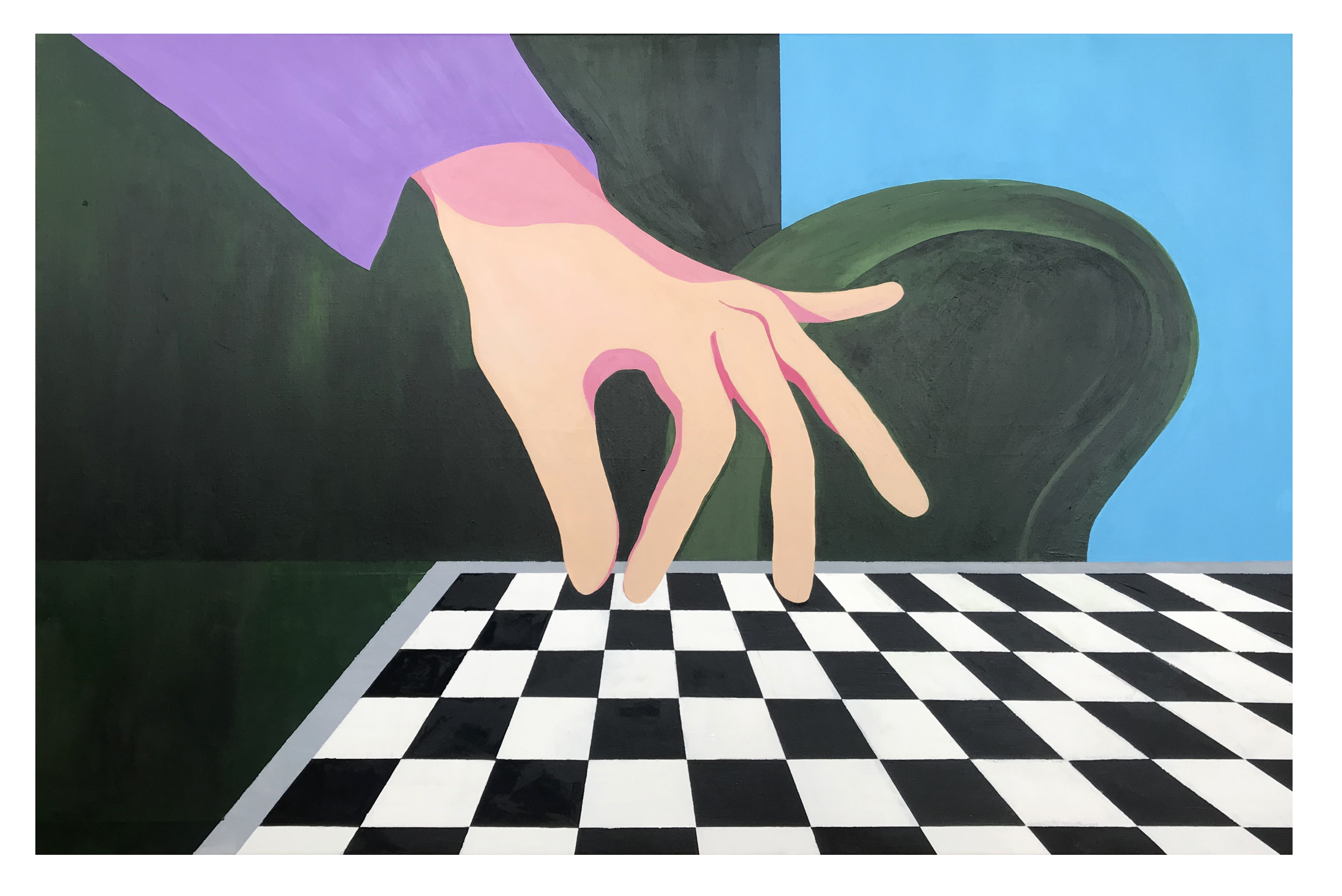
In this work, La Gauchère is also a mindset, incarnated by the hand which discovers itself in every line it draws. I try to paint its scenes, and tell the tale of its evolution.
The finality of this project will be a book that will regroup my sinister-hand made productions and research, assembled in an educational and poetic story of character making.
Please contact Marion Cachon to get more infos about how to use La Gauchère.
Marion Cachon works as a graphic designer between Lyon and Caen since 2018. She graduated from École nationale supérieure des beaux-arts, Lyon. La Gauchère is her diploma project, she is still developing it and she received the grant Brouillon d’un rêve littéraire for it. She is also the co-founder of We Sow since 2016. She is particularly interested in the pedagogical and didactic challenges of graphic design, in particular for social perspectives of transmission and accessibility of knowledge.
Links:
marion.ccn@gmail.com • we-sow.eu • Instagram